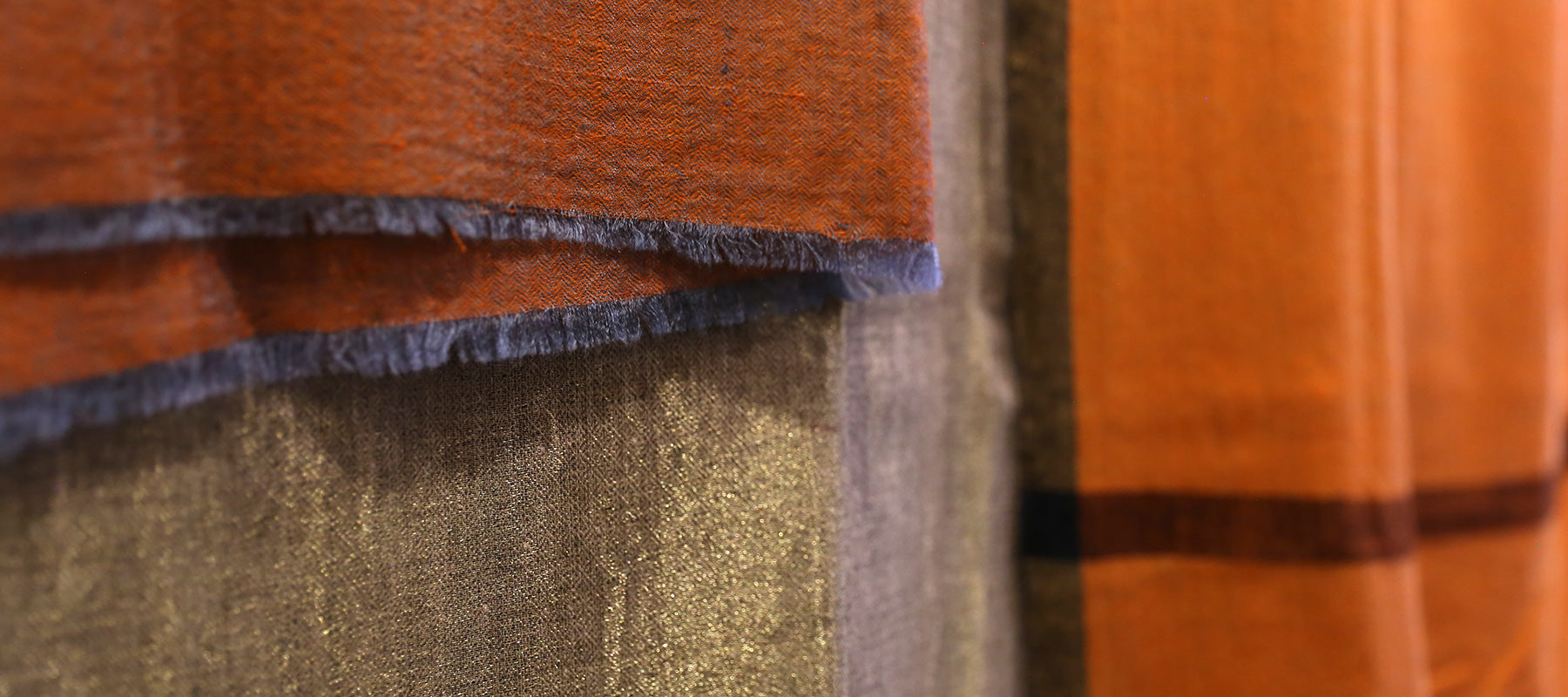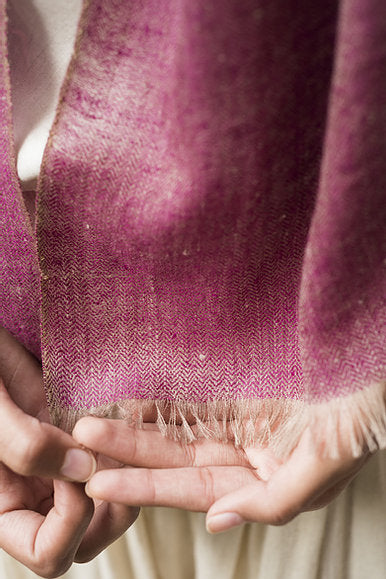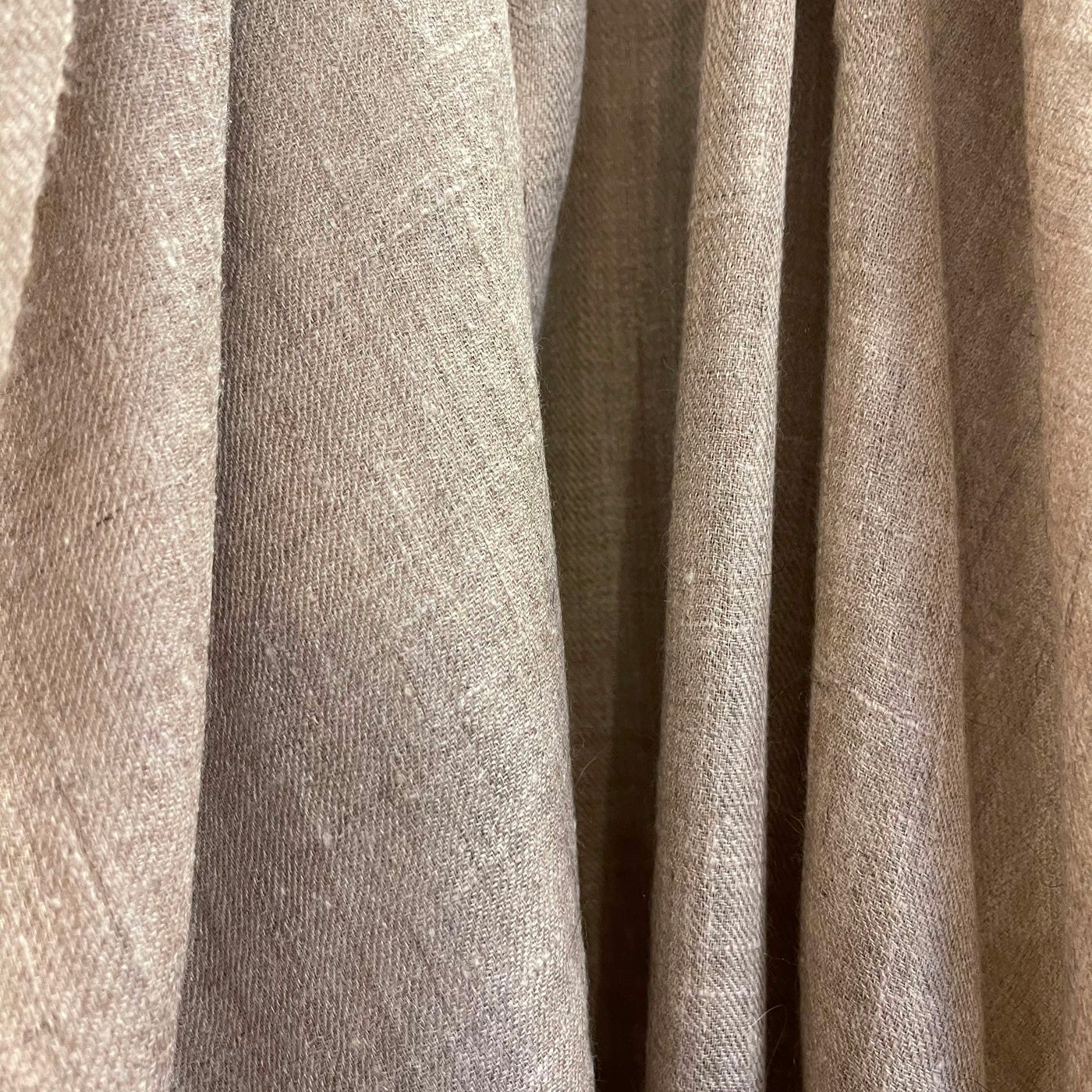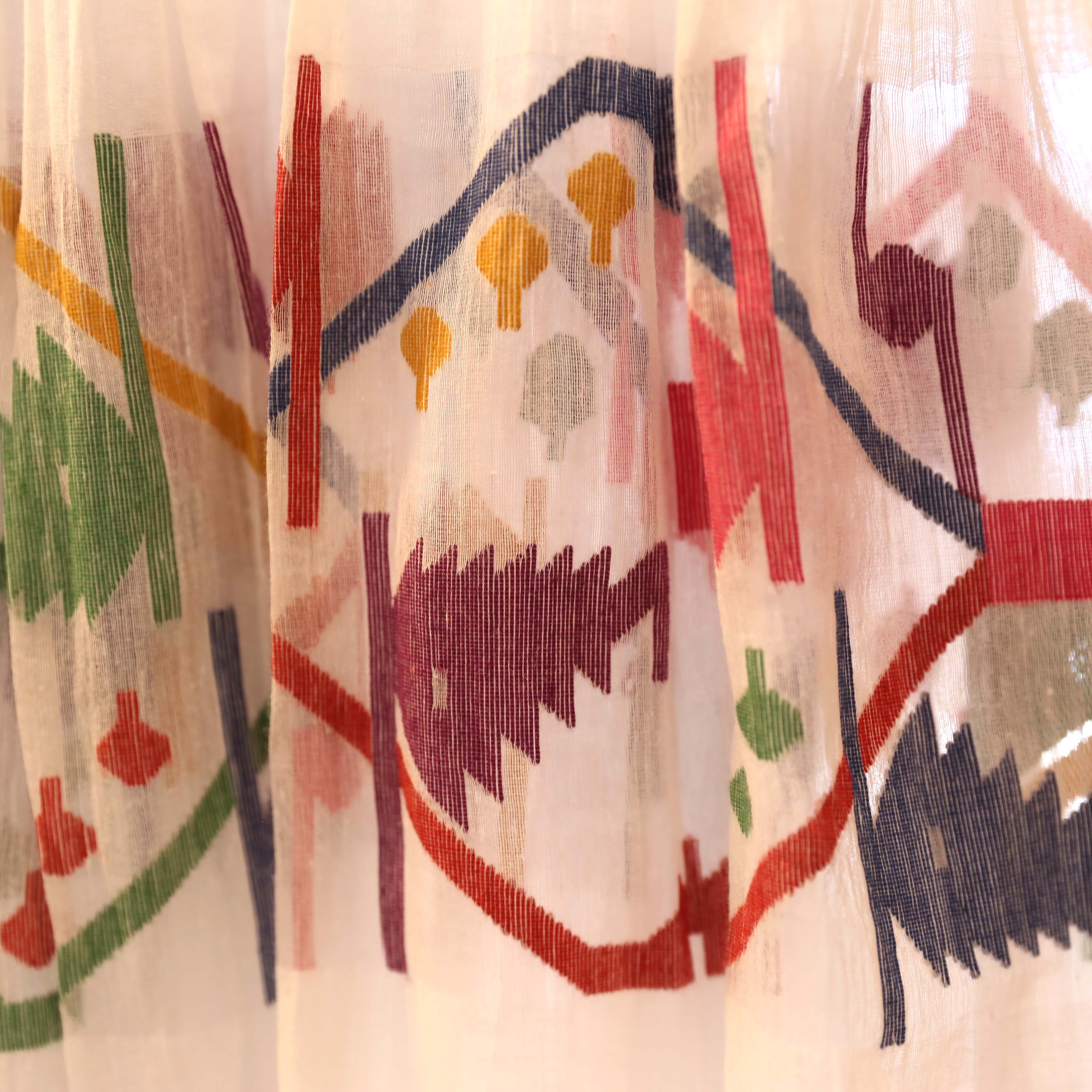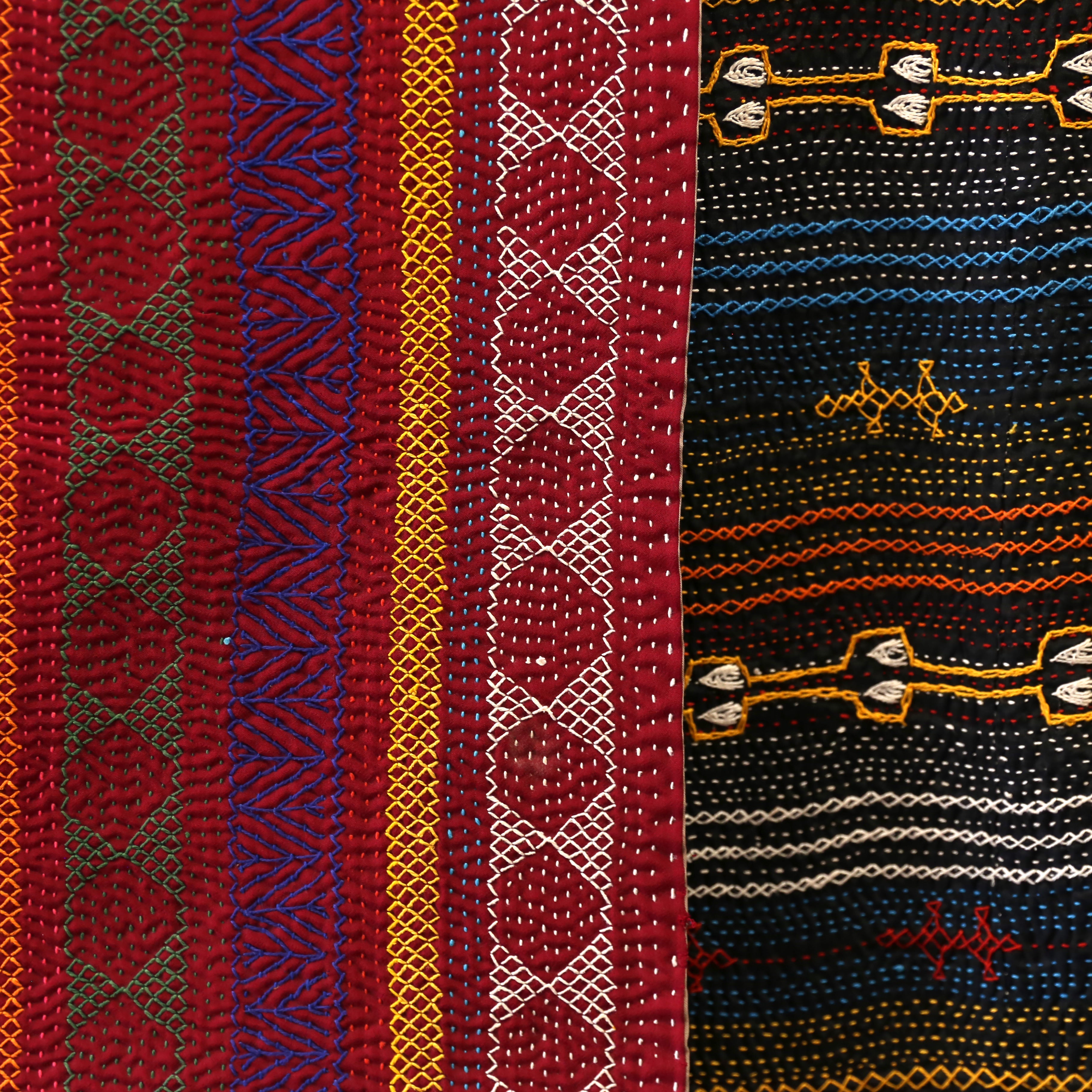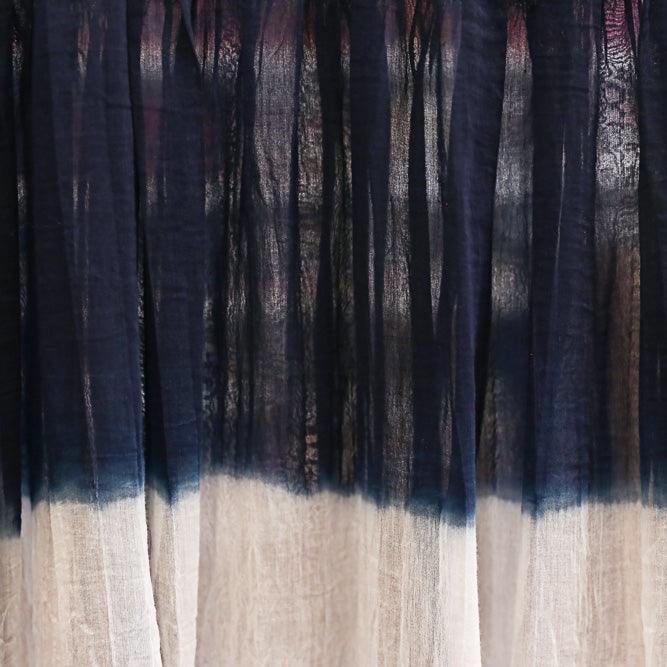Woven ⋮ Pashmina
WHAT IS PASHMINA?
Of all the animal fibres, the down from some breeds of domesticated goat of Inner Asia, internationally known as “cashmere”, is the most famous.
In India the fleece of the Tibetan goat, from which the classic Kashmir shawl was woven, is usually called pashm, an Urdu word originating from Farsi, that can be applied to the raw fibre of the down producing animals of high Asia; when the term is used without qualification goat-pashm is understood.
Pashmina is the yarn spun and the material woven from pashm.
Pre-eminent among the down-bearing goats was the trans-Himalayan breed of Tibet and Ladakh, India’s northernmost region, often referred to as the shawl goat or the pashmina goat, and identified in contemporary breed-lists as the Tibetan or Changthangi goat (Changthang is Tibet’s immense northern plateau which extends from the Chinese province of Qinghai west 1600 km into the southeast corner of Ladakh). The herdspeople who raise it know it as changra or “northern goat”. This was the animal whose pashm was, par excellence, the raw material of the Kashmir shawl, hence the 19th-century application of the term “cashmere” to all goat-pashm.
HISTORICAL BACKGROUND
The emperor Akbar had such a fondness for the Kashmir shawl that he gave it an affectionate nickname: parm-narm, “supremely soft”. It was an object of desire not only for Mughal emperors and Sikh maharajas, but also for Indian and Iranian nobles, Armenian merchants, French empresses and their ladies-in-waiting, British aristocrats, and, eventually, for the wealthy bourgeoisie created by the Industrial Revolution on both sides of the Atlantic.
It inspired any number of imitations, but none that could even approach the original in softness, delicacy and charm of design; and it left a lasting imprint in the aesthetic sensibility of the modern world in the so called paisley, a motif developed in the ateliers of Kashmir’s shawl-designers.
But while the Kashmir shawl contributed to the romantic 19th-century vision of the “Orient”, it also fell victim to the vagaries of Western fashion. Worse, it became an item in the Imperialist’s economic project of taking anything they fancied of beauty and value from the colonised world, commodifying it, using it as a template for mass-production in Europe’s mills and factories and sending the cheapened products to undercut the original in its traditional markets.
Western demand for an article thus deprived of its exclusive cachet slumped; the industry, which had become largely dependent on it, crashed.
Not completely, though. Even when the West was done with it, the Kashmir shawl survived though, shorn of some of its glory. Throughout the 20th century the pashmina shawl, woven and embroidered in Kashmir, remained an indispensable item in the winter wardrobe of the ladies of North India’s affluent middle class; and since the mid-1990s, the exponential increase of wealth consequent on the economic reforms started in 1991 has created a patron-class for the revival of ancient techniques and skills which had all but disappeared.
Reference: "Pashmina: The Kashmir Shawl and Beyond" by Janet Rizvi with Monisha Ahmed (Mumbai, Marg Publications, 2009).

